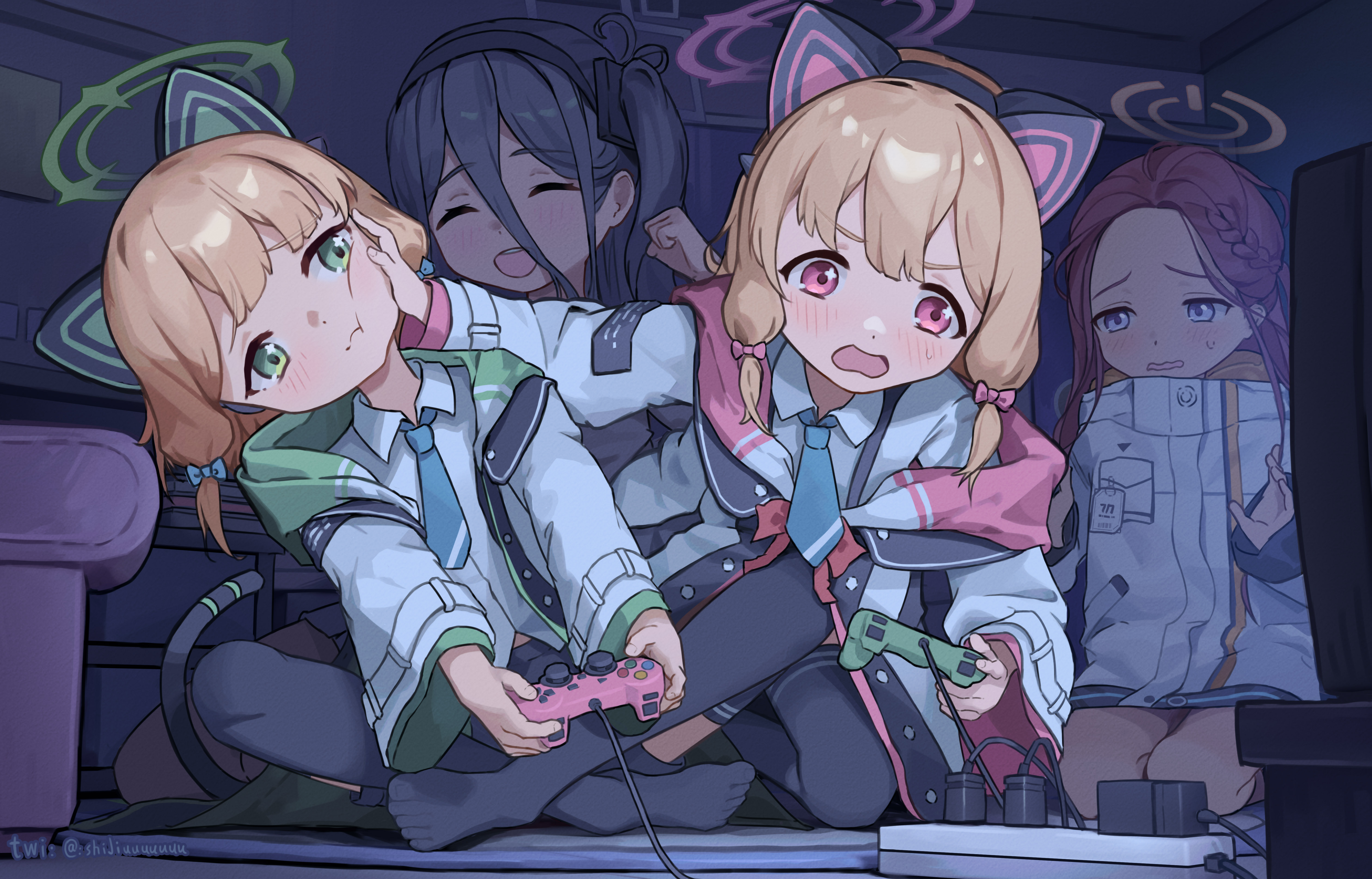The main character of the anime.
As promised in the test post, here is the review of Lucky Star, another series that is overhyped all over the tubes, especially the main culprit that is 4chan. Did the series is as guilty as the often-referenced Haruhi Suzumiya or will it be able to challenge Nodame Cantabile and claim the award? Complete with hi-res images, no more downsampling.
One of the many delusions of the main character.
Story:-
This Azumanga Daioh-esque series sees Izumi Konata and her 3 friends communicate with each other and others in their high school, often in humorous ways. Her friends sometimes has problems dealing with the otaku that is Konata, which led up to many funny, snarky and witty dialogs, which ironically will prove to be the series’s downfall. The main feature of this series is the plentiful of references/parodies of other anime/manga/TV shows/commercials/events/personalities and more, due to the geeky nature of the main character. The 2 most referenced anime are The Melancholy of Haruhi Suzumiya and Full Metal Panic.
Now the main weakness of the anime is that 98% of the time, all the jokes are delivered by the means of dialogs and body languages, usually at high pace. Imagine the snarky remarks that the main character in Kino no Tabi made, only far more frequent and faster. The CTRL + <– button combo on Media Player Classic is really my good friend. This is personally the first time I have seen such a dialogue-heavy comedy title with near-zero slapstick humour. It works well at first but getting stale as the series marched on, plus it also requires more concentration to enjoy the series. Other common comedy series such as Azumanga Daioh, Galaxy Angel or even Haruhi Suzumiya has a nice mix of slapstick humor, witty/funny dialogues, facial/body languages or just plain humorous actions that we all can laugh at, but Lucky Star heavily favours only one method of joke delivery.
The story (or the lack of it actually) started well up to the first 10 episodes or so before starting to taper off towards the end. I blame it squarely on the introduction of extra characters in the second part of the series, compounded with the weakness described above. The introduction of the new characters cut down the screen time of the best character of the series, Hiiragi Tsukasa which is the only character that is the most versatile from the 4 main characters. She is the only one who seems able to use other methods other than dialogs + body languages to deliver her share of the humour.
The jokes in the series are excellent, no question about that. But being deployed monotonously in only one way for 24 episodes takes some of the potency off them. The jokes deals with issues of everyday life, video games, anime, life as an otaku, romantic interests and many more. Prominent in the series is the heavy reference of other anime/manga etc that is listed above. In fact, my favourite moment in this series is the parody of Initial D in episode 6, which reeks of awesomeness. Notice that the parody is done not via dialogs or body languages but with plain pure action, complete with the appropriate music and superb execution of the gutter driving technique.
The Initial D parody scene…
Character Design:-
The character designs in this anime is generic and average, nothing really worth writing about. You know, big eyes and hair colours that can be anything but black. Most of the time you will not be able to see the main characters’ real faces anyway, that’s how that often facial expression techniques are abused in the series.
…complete with the immortal line from the anime. BTW there are no five consecutive hairpin curves ahead, just one.
Voice acting:-
Unlike the character design, the voice acting in this series are good, especially for Konata and Kagami. Good, but not excellent. Despite Konata having a good voice actress, the style of the joke delivery via dialogue is pretty much very singular without any visible effort by Hirano Aya and co. to use variations in tones and techniques when speaking to each other. Episode 1 already set the theme, in a classroom environment, where the 4 main characters banters with each other. The style you see in the episode will be used repeatedly throughout the series, making the weakness mentioned above magnified even more.
3 Initial D parody screens, that’s how good the scene is. If you like Initial D, this scene (less than a minute long in episode 6) is good enough reason to watch Lucky Star.
Music:-
The OST is decent, but not the OP theme. For the unorthodox ED themes (one for each episode – usually covers), it largely fails with too few exceptions.
This character perform one of the better ED themes in this anime. Sadly, not many is as good as hers.
Animation/Direction:-
The animation is very fluid across all scenarios. 2D and CGI scenes blends together seamlessly like the one in the Initial D parody. Action-related scene are also choreographed well. The directing is average at best unfortunately, nothing much can be said.
A parody of a series I did not know.
Conclusion:-
8 out of 10. Nodame Cantabile still hold the provisional title of the best anime of 2007. This anime is actually better than Haruhi Suzumiya, but nowhere near the level of Azumanga Daioh (which I highly suspect this series tried to mimic). A pity, considering that when it comes to quality of the jokes, Lucky Star are not far behind. And for the 2007 reference, Claymore with its f*cked up ending is also better than this series.
Another parody scene from a familiar TV show.






















